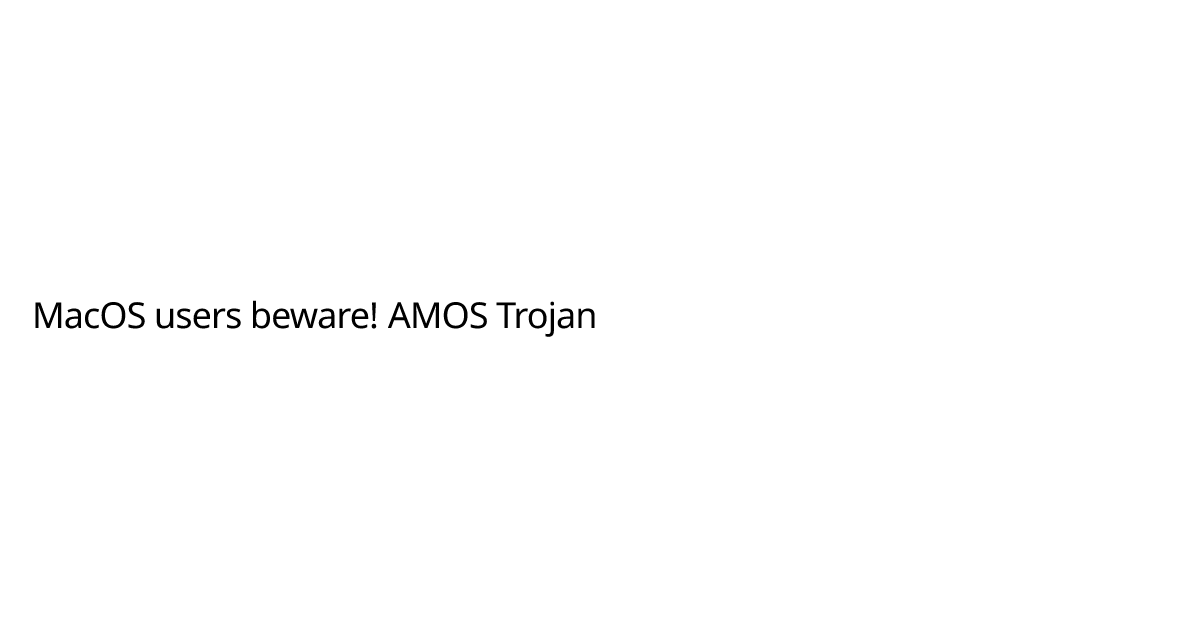When Macs Are No Longer Safe: Lessons from a Trojan Incident
For years, macOS users have prided themselves on the platform’s robust security. But as this incident shows, even Macs are no longer immune to sophisticated malware attacks.

Here’s the story of an international entrepreneur’s close call with the AMOS Trojan and the lessons we can all learn.
A Seemingly Trustworthy Opportunity
The entrepreneur operates a crypto-enabled gaming project with global reach. Recently, they were approached by a prominent venture capital firm. Over several weeks, the VC firm established trust through professional communications on platforms like Twitter, Telegram, and email. Initial meetings appeared genuine, with well-branded materials and relevant discussions.
However, during a critical call, the firm claimed that key stakeholders, based in China, preferred using WeChat for the discussion. They provided a link to a WeChat Teams application, urging its quick installation.
The Trojan Horse Revealed
Though the WeChat Teams link appeared legitimate, the entrepreneur and their team grew suspicious. Upon downloading the software, the application bypassed standard macOS security prompts. One team member ran the file through VirusTotal, a service that scans files for malware. The result? It was flagged as the AMOS Trojan, a so called stealer.
Realising the potential threat, the entrepreneur immediately disconnected their Mac from the internet and reformatted the system to ensure complete removal of the Trojan.
Social Engineering at Its Finest
This incident underscores the growing sophistication of social engineering tactics. The attackers used urgent scenarios to bypass critical thinking, presented professional branding and realistic communications, and exploited the team’s trust and eagerness to move forward.
Social engineering is particularly dangerous because it targets human behaviour, not just technology.
Lessons for macOS Users
Key takeaways for individuals and organisations:
- Scrutinise software requests. Avoid downloading or installing software in haste and verify the legitimacy of applications with tools like VirusTotal.
- Isolate your system. Disconnect from the internet if a threat is suspected and use a sandbox or virtual machine to test unknown software.
- Adopt proactive security measures. Keep macOS updated with the latest security patches, use trusted antivirus and malware detection tools, and regularly update passwords while avoiding keychain storage (which I will research further).
- Be wary of social engineering. Stay alert for red flags, such as urgency or missing video feeds during calls, and remember that even professional-looking communications can be deceptive.
The Bigger Picture
The AMOS Trojan highlights the rise of malware targeting macOS. Attackers are leveraging AI and malware-as-a-service to create accessible and effective tools. While Macs were once considered safe, their growing popularity makes them attractive targets.
For international businesses, particularly in sensitive sectors like crypto, heightened vigilance is essential. The cost of a breach can be immense.
Final Thoughts
This close call with the AMOS Trojan reminds us that no platform is invulnerable. By adopting proactive measures and staying alert to social engineering tactics, macOS users can protect themselves from evolving threats.
Stay safe, stay informed, and always question the links you click.







